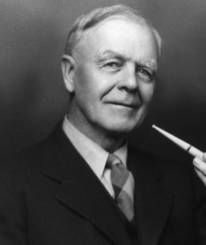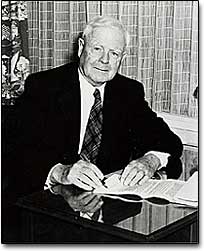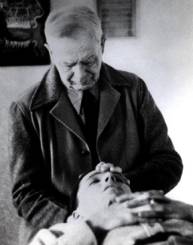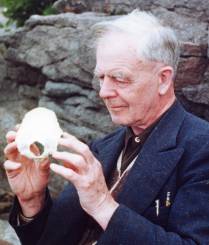|
Brief
History of Cranial Osteopathy

William
Garner Sutherland, D.O. - Founder of Cranial Osteopathy (Osteopathy in the Cranial
Field)
1873
- 1954

William Garner Sutherland was born in Portage
County, Wisconsin in 1873. His father was a blacksmith and his mother a
homemaker. Dr. Sutherland was the third of four children. His first
professional job was as a reporter with a local newspaper in the northern part
of Wisconsin. He remained at this job until the age of 22.
In 1895, Dr. Sutherland enrolled in the American School of Osteopathy [ASO]
(now, the A.T.Still University of Health
Sciences)). He graduated at the age of 25 in 1898.
Dr. Sutherland was an extraordinarily bright student and while at the ASO
he made an observation that would change not only his life, but the lives of
many osteopaths and patients/countless others.
While looking at a disarticulated skull in the hallway of the
ASO, he noticed
that the places where the bones articulate were beveled “like the gills of a
fish.” He felt this suggested
both a sense of motion and of respiration.
This was the launching point for the extensive study, discoveries and
teaching to which he would later dedicate his life.
Dr. Sutherland determined that there is a palpable movement within the body
that occurs in conjunction with the motion of the bones of the head. This is a
rhythmic alternating expansion and contraction motion in the cranium which is
part of what he termed the Primary Respiratory Mechanism (PRM). This motion
exists in every cell of the body and can be felt and worked with in any part of
the body by a trained physician.
Of his discovery, Dr. Sutherland has said, “
Have
you ever had a thought strike you? I have told many times of the thought that
struck me before I graduated from the American School of Osteopathy. [In trying]
to prove that motion between cranial bones in the living adult is
impossible....I gained knowledge not only of the articular mobility of the skull
but also of the Tide and something within that I call the "Breath of
Life." I do not consider this contribution of thought mine--I call it a
guiding thought.”
The Primary Respiratory Mechanism is a model proposed by Dr. Sutherland to
describe the interdependent functions among five components as follows:
- The
inherent motility of the brain and spinal cord
- Fluctuation
of the cerebrospinal fluid
- Mobility
of the intracranial and intraspinal membranes
- Articular
mobility of the cranial bones
- The
involuntary mobility of the sacrum between the ilia (pelvic bones)
Cranial Osteopathy was discovered, developed and taught by William Garner
Sutherland, DO, in the first half of the 1900s. Dr. Sutherland always emphasized
that the cranial concept was incorporated within the teaching of Dr. Still's science of osteopathy.
Despite a growing number of loyal students and appreciative patients, Dr.
Sutherland was met with an avalanche of criticism and was labeled a
"quack" for his theories on the mechanism of "primary respiration."
The strain of those early years took a toll on his first marriage and Dr.
Sutherland divorced in the 1920s. He had one child from this marriage. Dr.
Sutherland remarried in 1927 and remained with his second wife, Ada, for the
remainder of his life.
Intensive study of Cranial Osteopathy began in 1939.
Today, Dr. Sutherland's observations have been borne out by scientific
study and computer imaging technology, and his work has been accepted as medical
fact.
Dr. Sutherland performed his research and practiced medicine for most of his
life in Missouri. In 1951, at the age of 78, Dr. Sutherland left the Midwest and
moved to Pacific Grove, California. He and his second wife, Ada Strand
Sutherland, lived together in California until he passed away in 1954. Dr.
Sutherland left behind an invaluable contribution to medicine revered by
Osteopaths all over the world.

 

|



